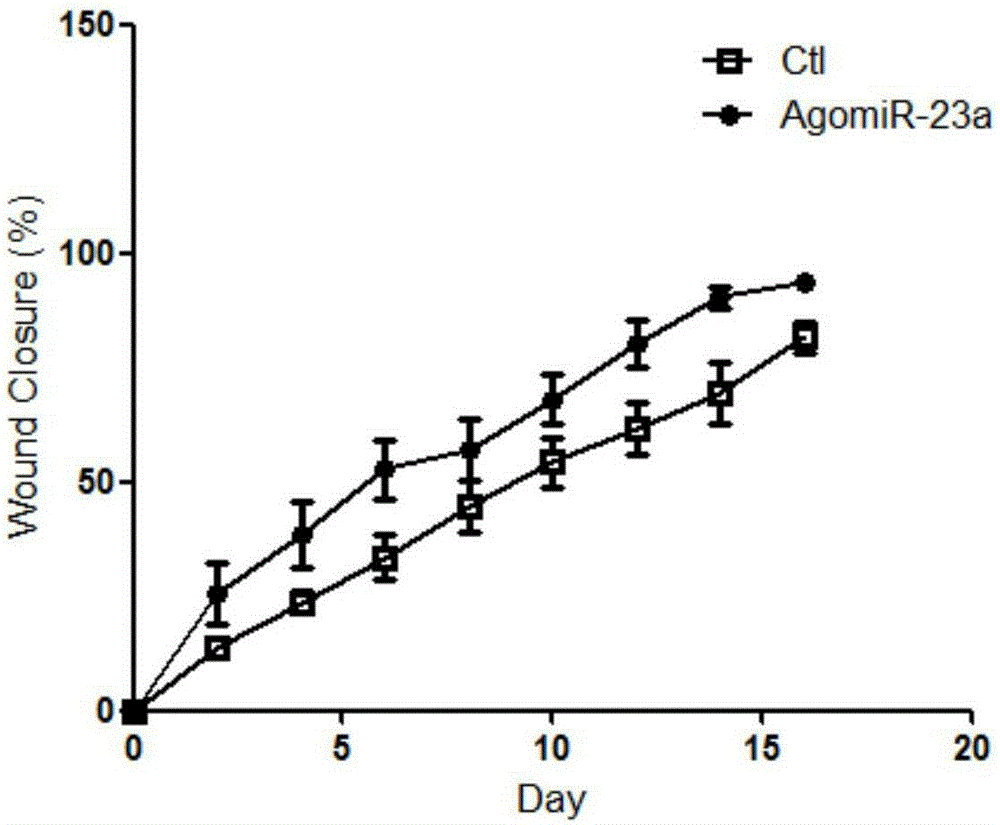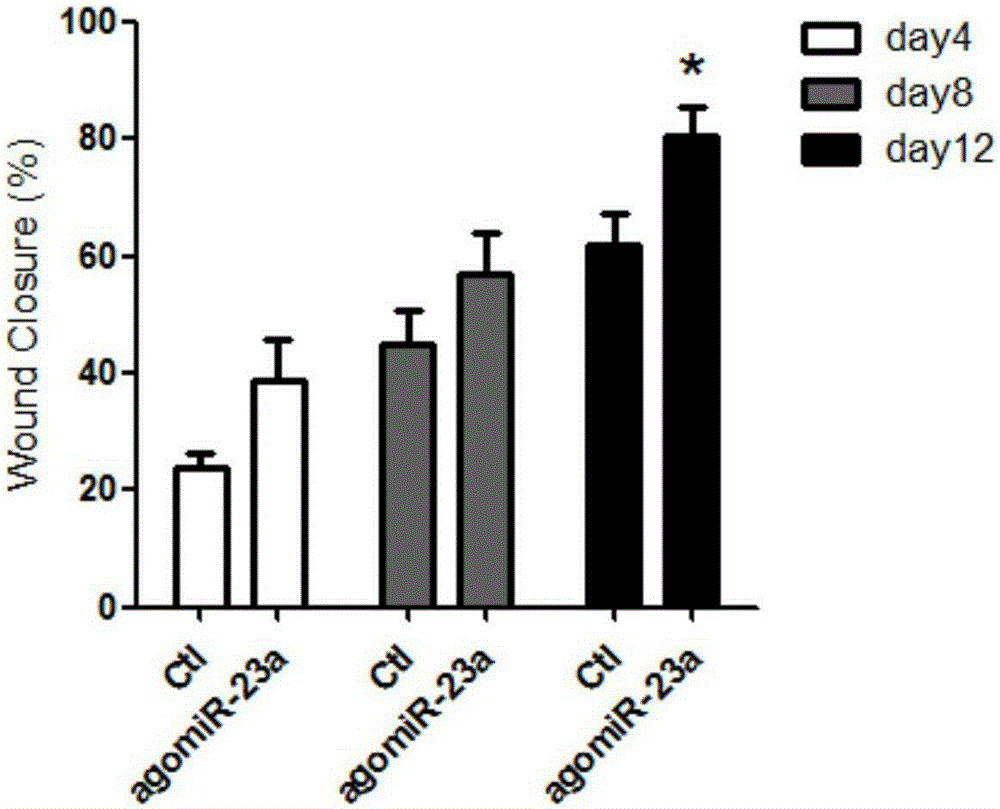Non-coding RNA for treating delayed healing of diabetic wounds and diabetes-related complications and application of non-coding RNA
A technology for wound healing and diabetes, which is applied in the field of drugs for the treatment of delayed wound healing in diabetes and diabetes-related complications, and in the field of nucleotide sequences for the treatment of delayed wound healing in diabetes and related complications of diabetes, which can solve the problems of less drugs and no treatment to promote wound healing
- Summary
- Abstract
- Description
- Claims
- Application Information
AI Technical Summary
Problems solved by technology
Method used
Image
Examples
Embodiment 1
[0033] Example 1: The role of microRNA-23a in promoting wound healing in diabetic mice
[0034] 1. Preparation of diabetic mouse model
[0035] The process of preparing diabetic mice is as follows: purchase 20-22g Kunming male mice of SPF level, feed them to about 25-28g and fast for 16-18h, then intraperitoneally inject streptozotocin at a dose of 1.8mg / 10g, measure the mice after 7d Fasting blood glucose was screened.
[0036]The preparation process of streptozotocin solution is as follows: streptozotocin needs to be dissolved in sodium citrate buffer solution with a final concentration of 10 mg / ml, and stored at -4°C in the dark. Since the biological half-life of streptozotocin is very short, It needs to be prepared immediately, and injected quickly in a short period of time.
[0037] Sodium citrate buffer solution preparation: 2.1g citric acid was dissolved in 100ml sterile water for injection to make citric acid solution, 2.94g sodium citrate was dissolved in 100ml ster...
Embodiment 2
[0046] Example 2: Effect of microRNA-23a on proliferation of endothelial cells
[0047] 1. Method
[0048] The cell transfection process is as follows: human umbilical vein endothelial cells (HUVEC) were inoculated in a six-well plate, and when the cell density reached 60%-80%, Agomir-23a (preparation method was the same as in Example 1), antagomiR-23a ( Guangzhou Ruibo Biotechnology Co., Ltd.) and negative control (NC) powder (Guangzhou Ruibo Biotechnology Co., Ltd.) dissolved in ddH 2 O was added to a six-well plate at a concentration of 20nmol / l and placed in 5% CO at 37°C 2 The culture was incubated in an incubator, and the experiment was carried out after 48 hours.
[0049] agomiR-23a is an agonist of microRNA-23a. antagomiR-23a is an antagonist of microRNA-23a. NC is a negative control.
[0050] The MTT experiment process is as follows: digest and centrifuge the transfected cells of each group, inoculate 10,000 cells / well in a 96-well plate, and place them in 5% CO ...
Embodiment 3
[0053] Example 3: The effect of microRNA-23a on the migration ability of endothelial cells
[0054] 1. Method
[0055] The procedure of the scratch experiment was as follows: human umbilical vein endothelial cells transfected with agomiR-23a, antagomiR-23a and NC in the logarithmic growth phase were collected (the preparation and transfection methods were the same as in Example 2), and seeded in a six-well plate. When the cell density reaches 90%, treat with mitomycin C (2 μg / ml) for 2 hours, use a 200 μl pipette tip to draw a straight line scratch in each well with a sterile ruler, and wash three times with PBS. After 24 hours, the same scratch position was observed under an inverted microscope and photographed to record the cell migration.
[0056] Three fields of view were used for each well, and the cell migration distance was analyzed by Image-ProPlus software. Cell migration distance = scratch width at 0 hours - scratch width at 24 hours.
[0057] 2. Results
[0058]...
PUM
 Login to View More
Login to View More Abstract
Description
Claims
Application Information
 Login to View More
Login to View More - R&D
- Intellectual Property
- Life Sciences
- Materials
- Tech Scout
- Unparalleled Data Quality
- Higher Quality Content
- 60% Fewer Hallucinations
Browse by: Latest US Patents, China's latest patents, Technical Efficacy Thesaurus, Application Domain, Technology Topic, Popular Technical Reports.
© 2025 PatSnap. All rights reserved.Legal|Privacy policy|Modern Slavery Act Transparency Statement|Sitemap|About US| Contact US: help@patsnap.com



